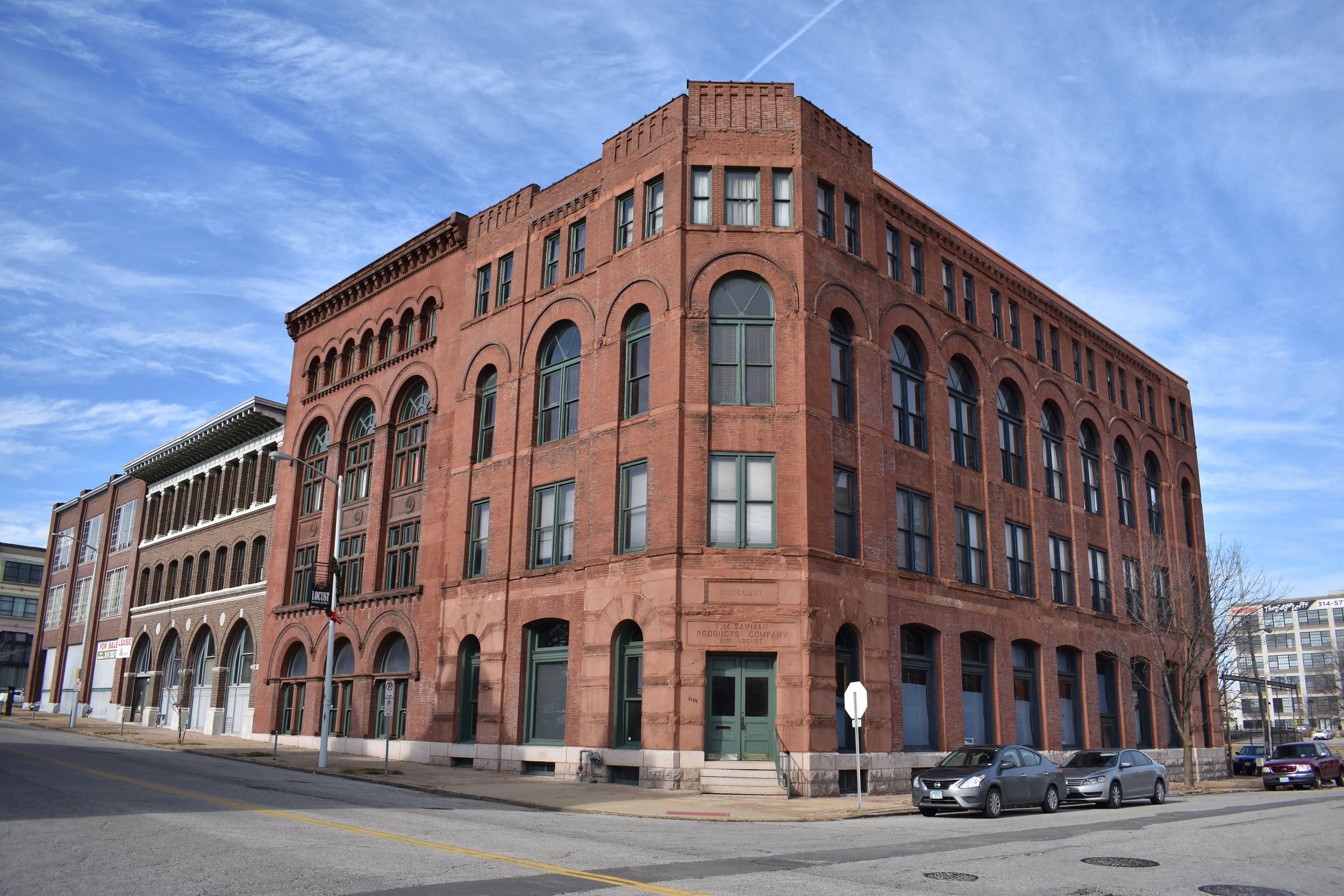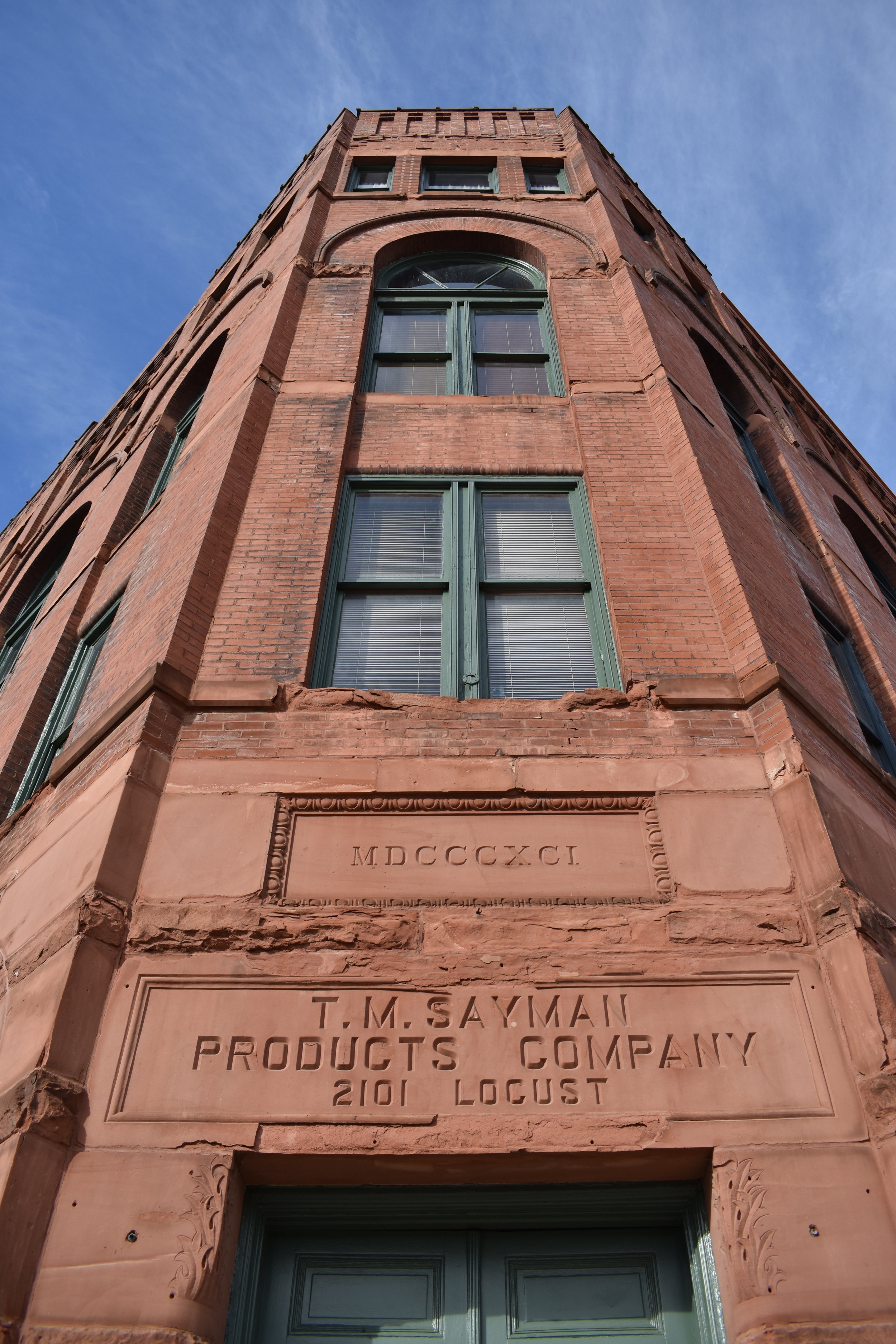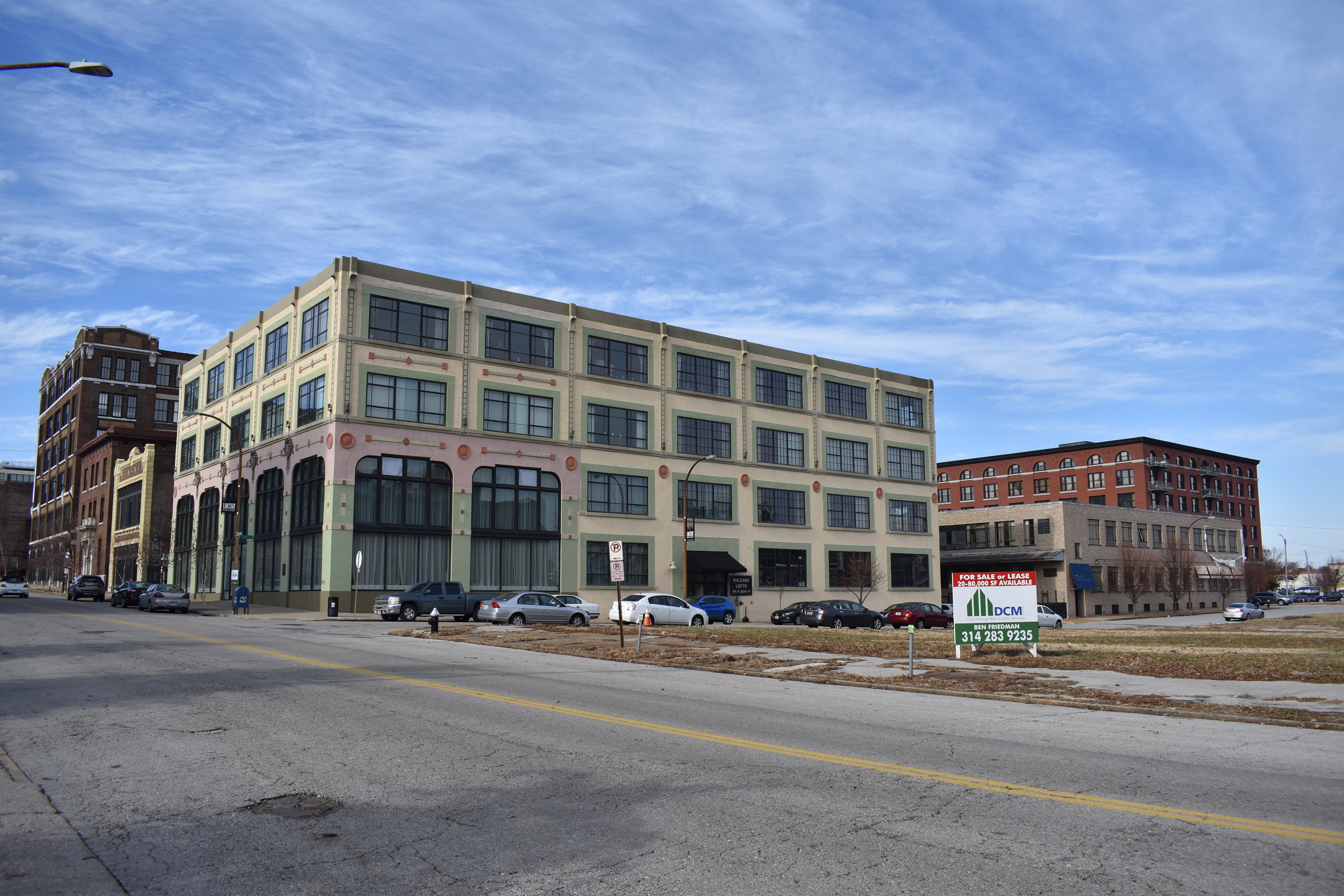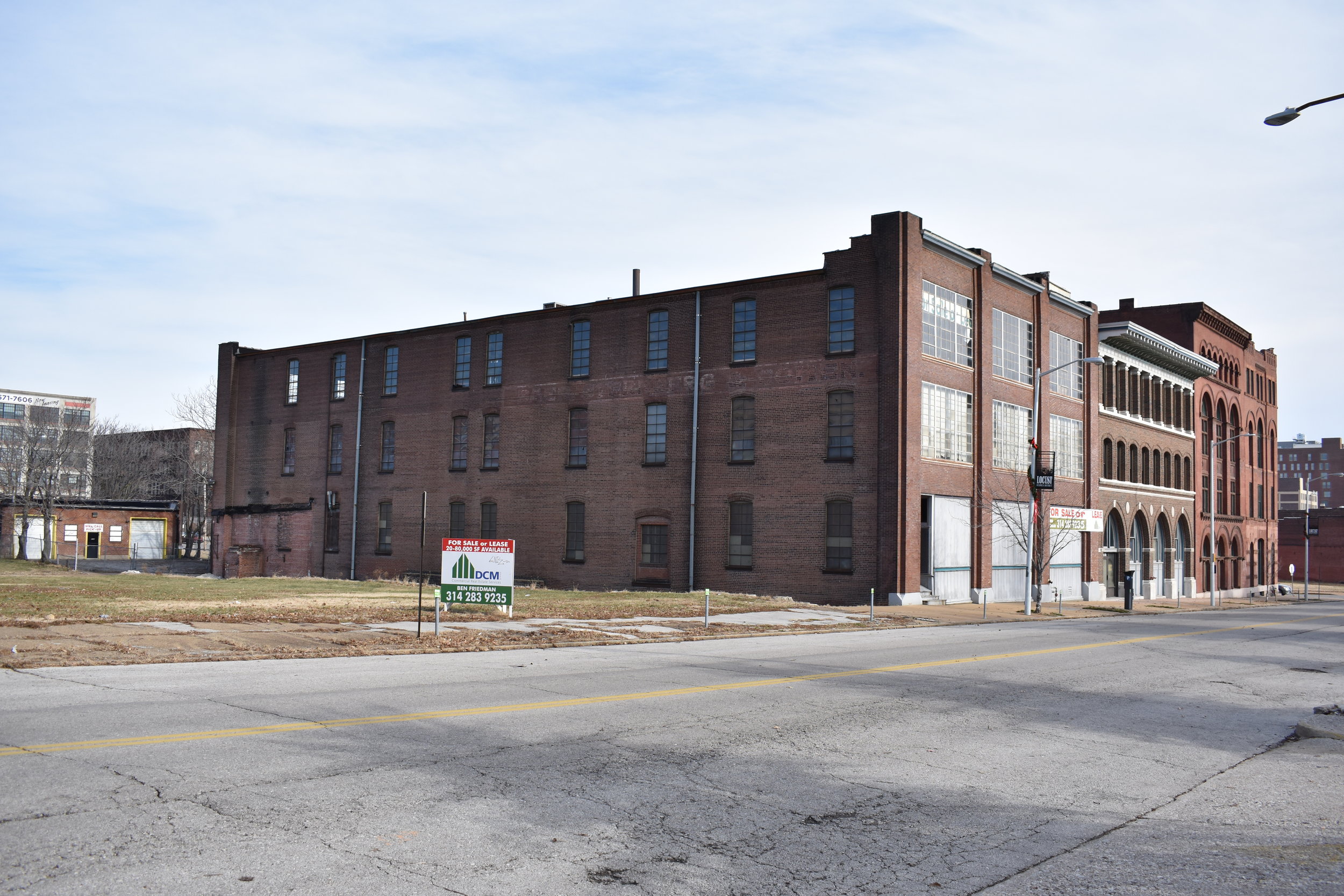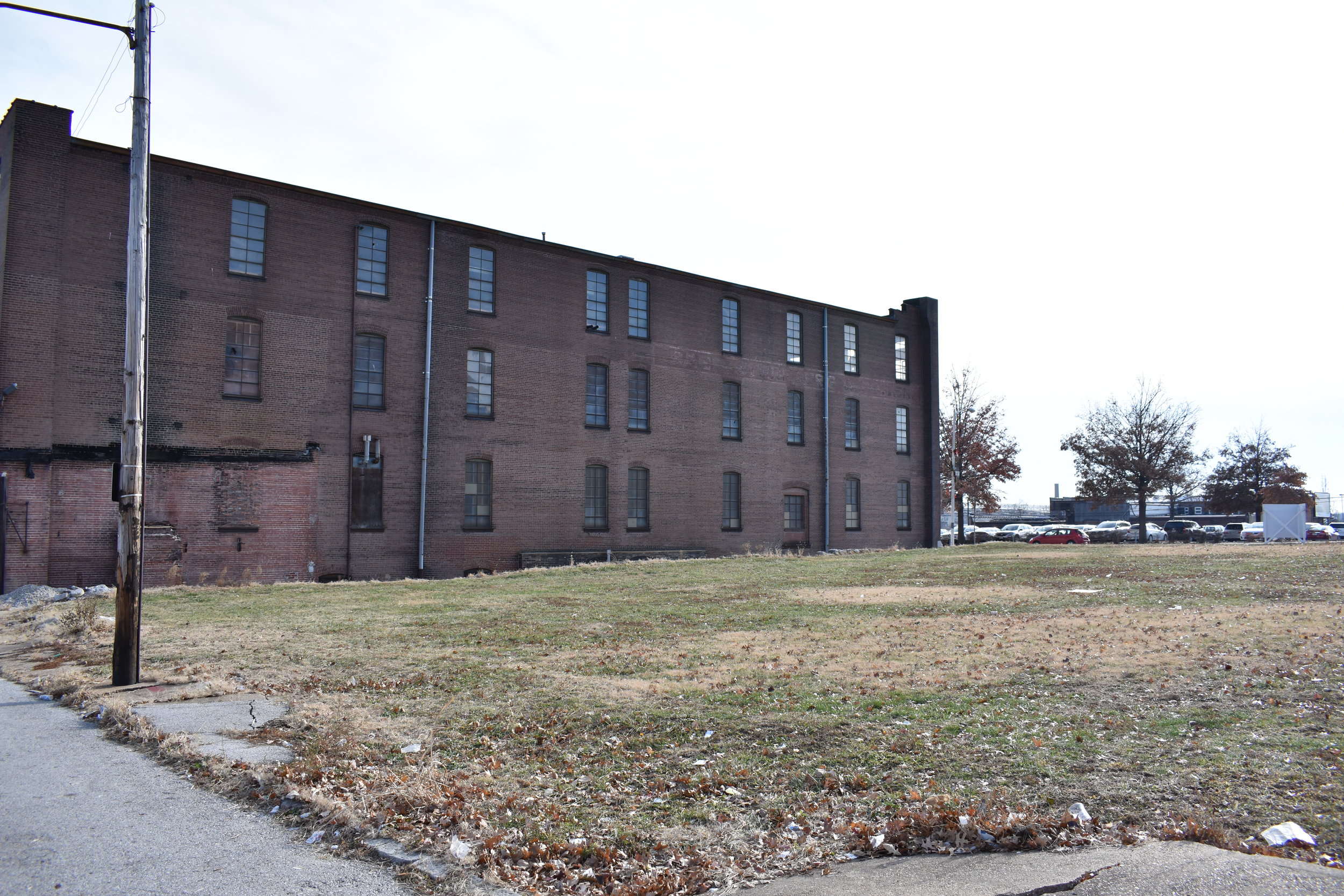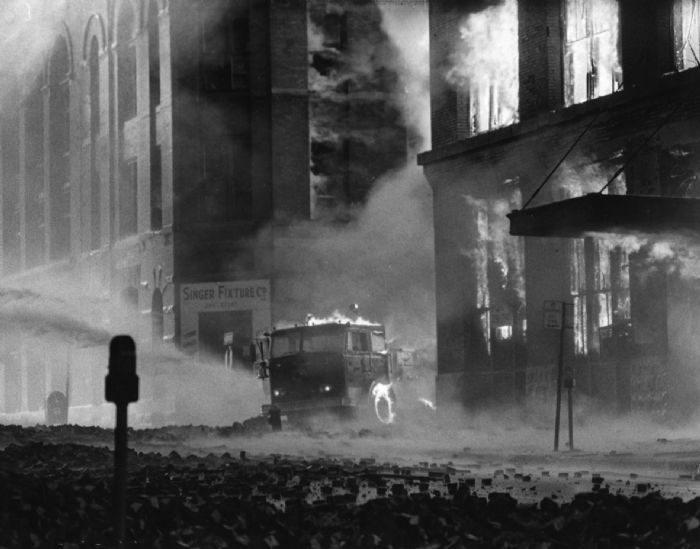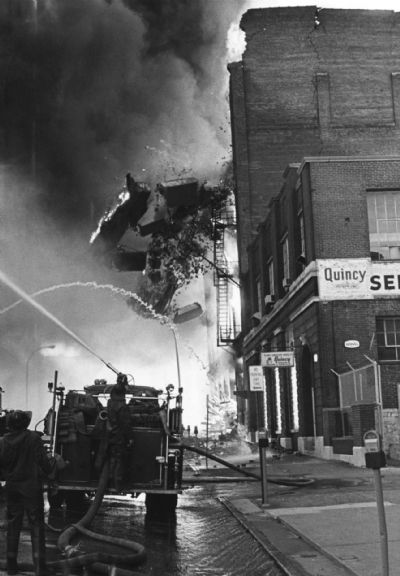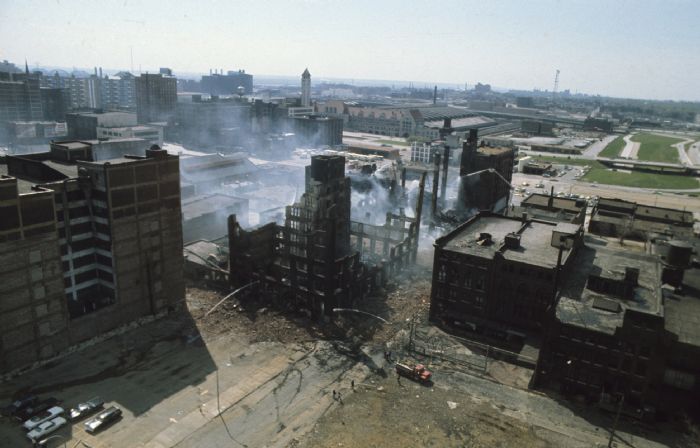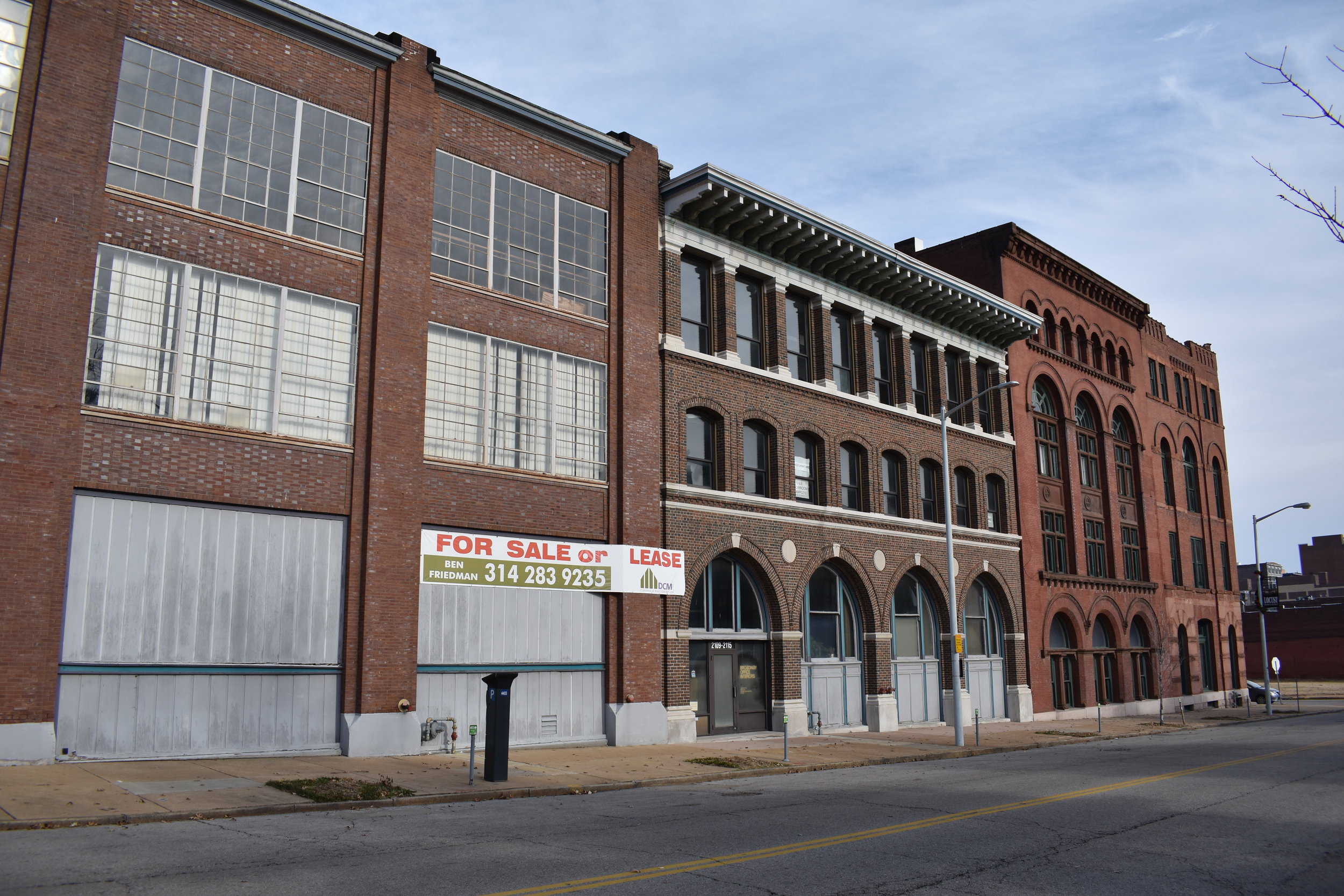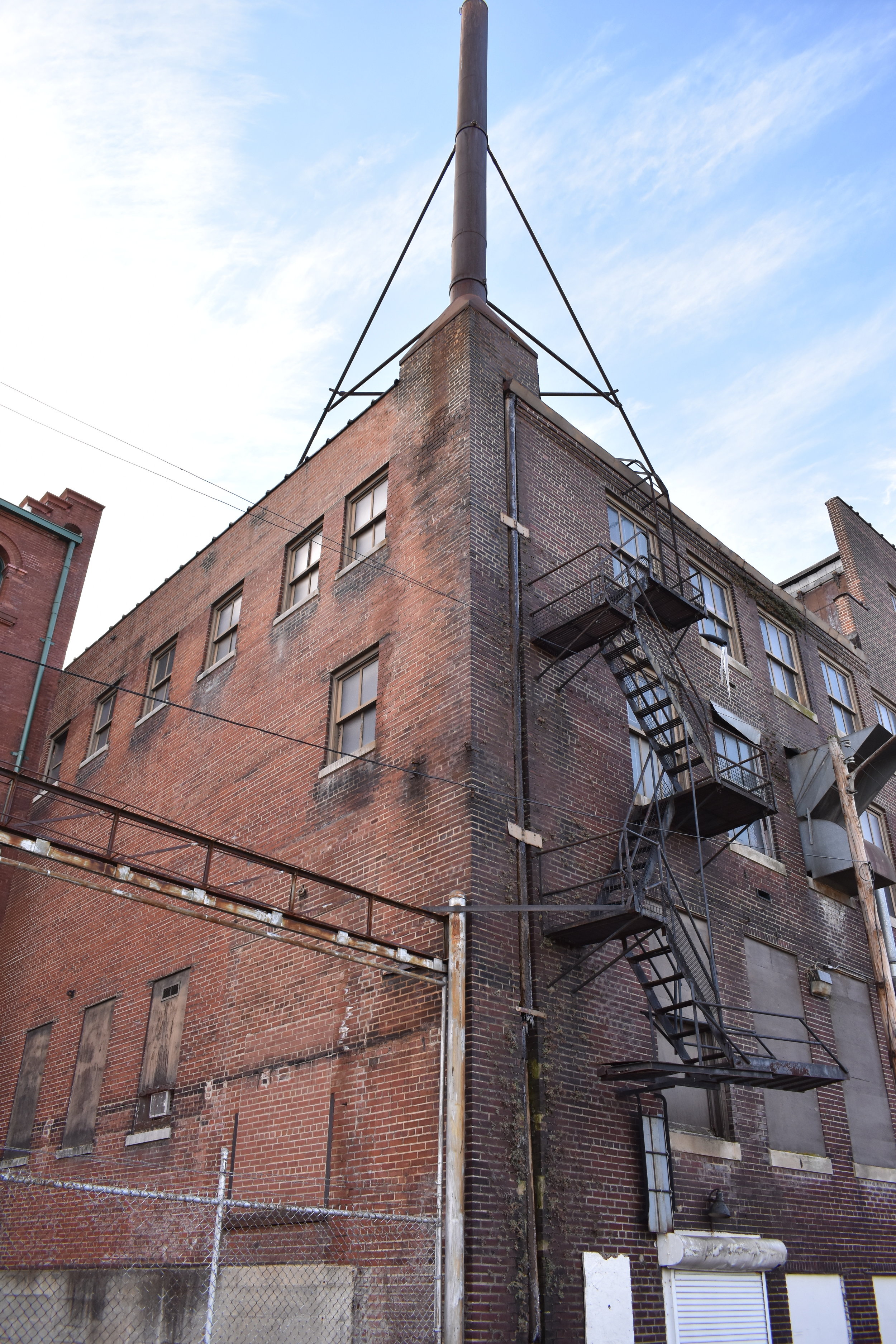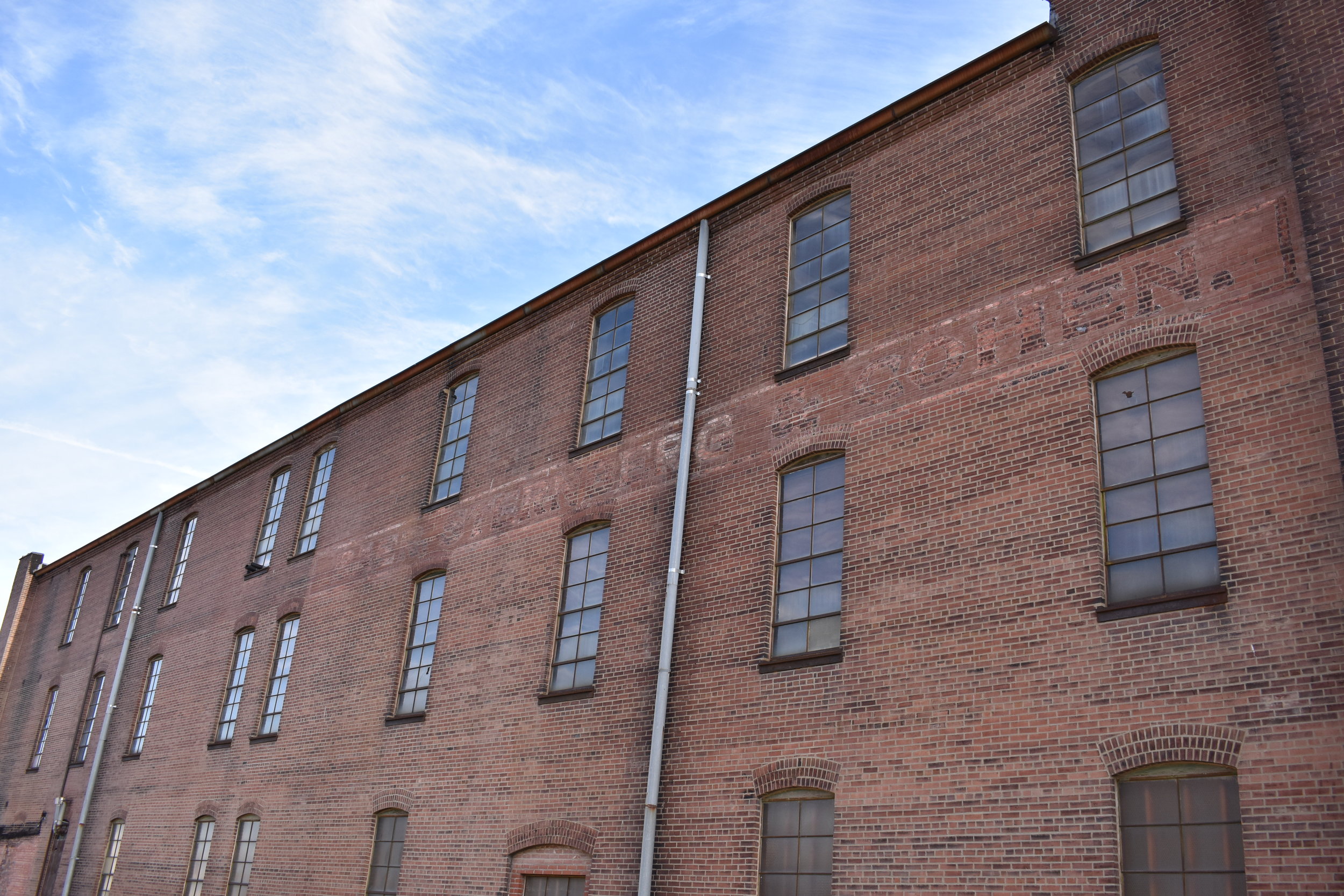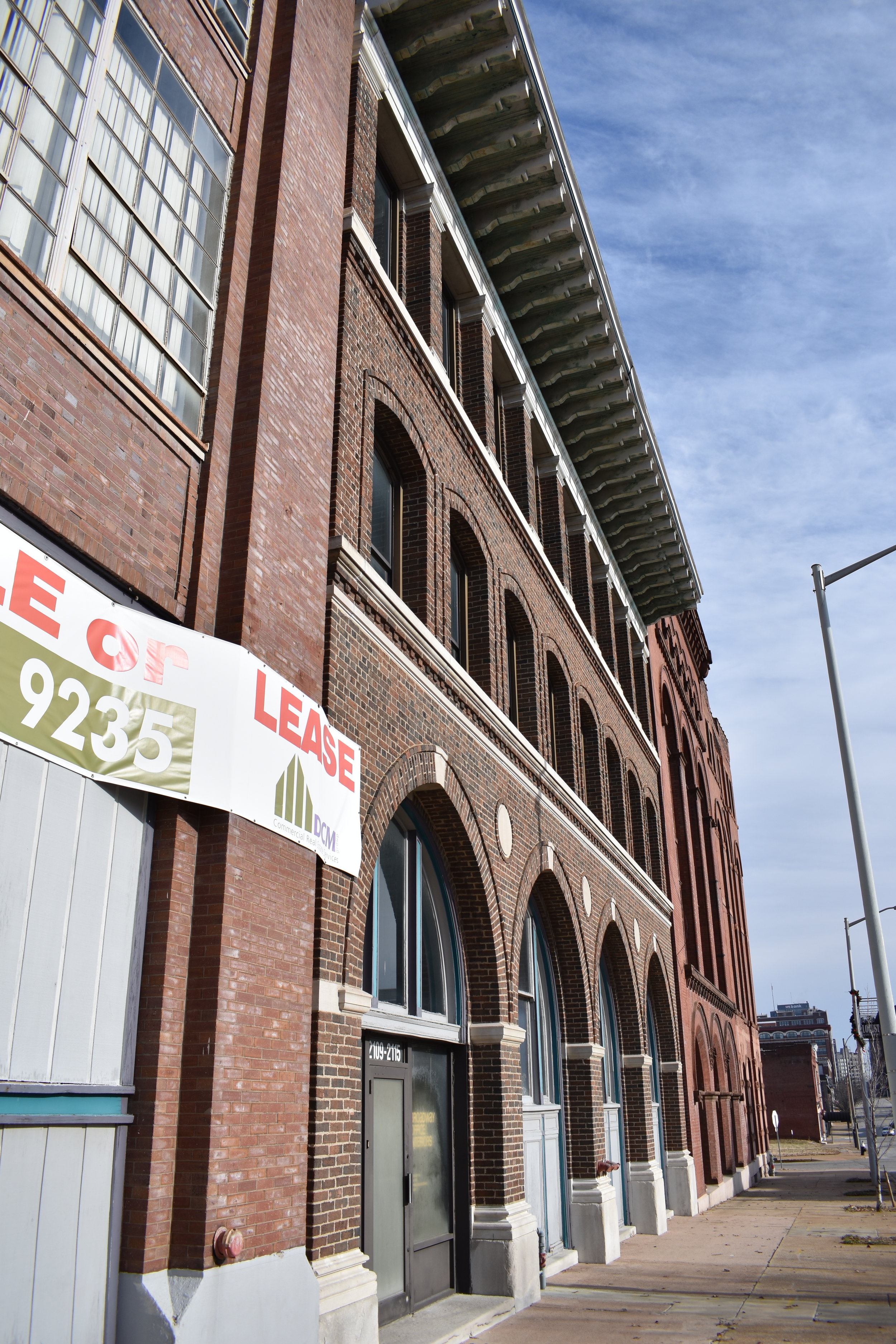Abbott Properties of Kansas City, MO is proposing a $32M development in the Downtown West Neighborhood on Locust Street between 21st and 22nd Streets.
I first read about this in the Post-Disptach:
“Abbott’s plan, called the Locust Collaboration District Center and Park, calls for 129,000 square feet of office and commercial space on the block along with green space fronting 22nd Street, where both parcels are already vacant.”
This project builds on the momentum of the Mendenhall Building renovation just a block west on Locust. This area will have much more activity in the coming years….and it needs even more.
This part of town feels like a blank palette of sorts, it’s an important part of the city worthy of attention.
That’s why this plan is appealing. It calls for the renovation of a few buildings that are quite beautiful, but way underutilized or fully abandoned.
One of the buildings included in the project at 21st and Locust, is a personal favorite. Some call it the Lambert Building, some the Sayman Building.
There’s a lot of online history of the Sayman Building.
T.M. Sayman was a card, a circus carny, a traveling snake oil salesman/medicine man who loved and nicknamed his gun Ol’ Becky Trueheart and was known for whipping it out and threatening people who crossed him (source).
“Sayman was born to German immigrant parents in 1853. He ran away from his home in Richmond, Indiana, and set off to make his fortune when he was just nine years old. Within a year, he had joined the G. G. Grady Circus. He soon had enough experience to be taken on by P. T. Barnum. Sayman dallied with vaudeville and eventually found his way into the world of traveling medicine shows. These medicine men lured crowds with various forms of entertainment, then pitched their captive audiences the latest miracle cure or wonder remedy—Sayman had found his calling.
The rapid growth of the company allowed Sayman to set up a permanent headquarters in St. Louis in 1894. By 1912 he had built the Sayman Building, an eight-story structure on Franklin Avenue.”
There are empty lots everywhere in this part of town, here’s what the space looks like as of publishing:
My mind just wanders when I visit these parts of town. How did we let this needless demolition happen? Well sometimes a combination of human activity and mother nature is the cause.
One of the joys of living in the Information Age, is you are usually a few clicks away from uncovering the past by documenters of history, in this case, Built St. Louis and the St. Louis Post-Dispatch.
Here’s some fascinating history on the Sayman/Lambert Building from Built St. Louis:
“Built in two harmonious sections a decade apart, the Lambert Building is a fine example of Richardsonian Romanesque. Its massive red sandstone facade makes it a powerful presence.
The original occupants were the developers of Listerine mouthwash. In 1938, the Lambert Company moved out, and another drug company, Sayman Products, moved in, carving their name over the entryway where it remains today.
Sayman moved out in 1975 and was replaced by the Singer Fixture Company. The move marked a period of decline for the building and the neighborhood (and cities in general.) The decline was hastened by an enormous fire in 1976 which destroyed several large buildings across the street, and damaged this one. The ground-level arches of the entryway can be seen in the 1981 film Escape from New York, posing as part of a post-apocolyptic New York City. It has since been renovated as office space, housing a variety of companies.”
Built St. Louis is a constant source of inspiration and arguably the best online document of St. Louis in photos and quick entries.
The 1976 fire was brutal and is the reason we lost six buildings and another four damaged, including the eight story Housing Authority building, factories and warehouses in the area. The Post-Dispatch photos are gripping.
I am thrilled some of these buildings, beautiful from both Locust and the alley will find new life.
I’m a little concerned about calling the outdoor collaborative space a “park”, because it is not an official St. Louis park, nor does the Parks Department have the means to maintain yet another park.
We have 108 official parks people, we need another park like a hole in the head. But, I’ll take the preservation component win well over underutilized spaces/ideas.
I’m also a little concerned about the speculative nature of “collaboration space” and over-saturation.
But, who am I to argue, these building will find love and investment affording them a shot at another 100 years, keeping St. Louis as one of the United States’ greatest and most beautiful brick cities.
The images of the empty lots and devastating fire will now be etched into my brain when I visit Downtown West. I will watch with joy if this one moves forward.
I feel a little more informed, a little more in touch with our past and still hopeful for our future after this post.


